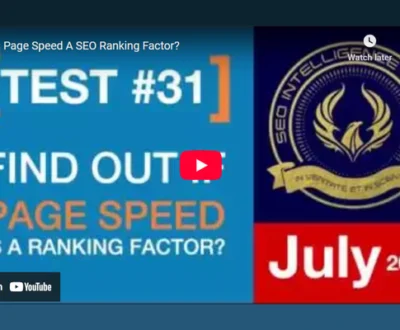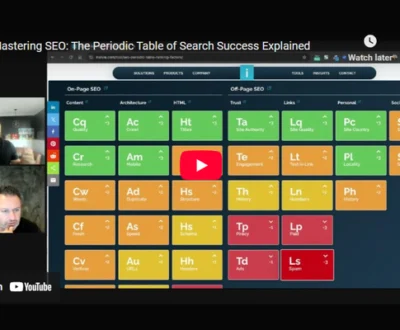Starting your keyword research means setting clear goals and knowing exactly who your audience is, including their needs and search habits. I begin by brainstorming seed keywords based on pain points and core topics, then use tools like Semrush to analyze volume and difficulty. Prioritizing long-tail keywords with manageable competition helps me target relevant traffic effectively. With a solid plan and continuous monitoring, you can align content with user intent and achieve measurable results. The next steps reveal how to optimize this process further.
- Key Takeaways
- Understanding the Importance of Keyword Research
- Setting Clear Goals for Your Keyword Research
- Identifying Your Target Audience and Their Needs
- Brainstorming Seed Keywords and Broad Topics
- Leveraging Keyword Research Tools Effectively
- Analyzing and Prioritizing Keywords for Success
- Building and Executing Your Keyword Research Plan
- Frequently Asked Questions
- Final Thoughts
Key Takeaways
- Start with clear business goals and define your target audience to ensure keyword relevance and effective content alignment.
- Identify audience pain points and brainstorm seed keywords, including synonyms and long-tail variations that match user intent.
- Use keyword research tools and competitor analysis to evaluate search volume, difficulty, and keyword alignment with your offerings.
- Organize keywords into themed groups and prioritize low-competition, long-tail keywords for quick wins and better engagement.
- Develop a content calendar based on prioritized keywords, monitor performance regularly, and adapt your strategy for continuous improvement.
Understanding the Importance of Keyword Research
Although keyword research might seem like a technical step, I’ve found it’s fundamental to creating content that truly connects with your audience. Understanding the keyword significance helps me identify the exact language and terms my audience uses when searching online.
This insight reveals their questions, needs, and desires, allowing me to align content with their search intent. When I grasp how my audience thinks about products or services, I can craft content that directly addresses what’s important to them. This approach boosts user satisfaction and engagement.
Additionally, keyword research forms the foundation of any effective SEO strategy, improving website rankings and attracting relevant organic traffic. It aligns content with audience’s search intent for better engagement and visibility.
By matching content to specific queries, I guarantee my site appears in appropriate search results.
Ultimately, this process guides my content strategy, helping me fill gaps and offer valuable information that resonates with my audience while enhancing visibility in search engines.
Setting Clear Goals for Your Keyword Research
Setting clear goals for your keyword research is essential to guarantee your efforts produce meaningful results. Before diving into keyword selection, I always clarify what I aim to achieve—be it increasing traffic, improving rankings, or boosting conversions. This goal alignment guarantees that every keyword I choose has keyword relevance, fitting both my content strategy and broader business objectives. By setting specific, measurable, achievable, relevant, and time-bound (SMART) goals, I can track progress and prioritize resources efficiently. Clear objectives guide not only which keywords to target, but also the type of content to create, making the research purposeful rather than random. This focus eliminates guesswork, helping me stay motivated and evaluate success accurately. Moreover, understanding user intent during goal setting ensures that the selected keywords connect effectively with the target audience’s needs. Ultimately, well-defined goals connect keyword research directly to my overall marketing strategy, guaranteeing that my SEO efforts support long-term growth and provide measurable value.
Identifying Your Target Audience and Their Needs
To create an effective keyword research plan, I first focus on defining the audience’s demographics, such as age, location, and occupation, to understand who they are.
Then, I examine their pain points to identify the problems they need solutions for.
Finally, mapping their search behavior helps me choose keywords that match their intent and online habits.
Defining Audience Demographics
Understanding audience demographics plays an essential role in identifying your target market and their specific needs. By focusing on demographic segmentation, I can break down the audience into groups based on characteristics like age, gender, income, and location.
This helps create accurate audience profiling, which guides targeted marketing efforts. Here’s how I approach it:
- Collect statistical data on population traits relevant to the product or service.
- Analyze customer interactions and use tools like Google Analytics for insights.
- Segment the market by shared demographic features to identify niche groups.
- Build detailed buyer personas reflecting typical audience profiles.
- Use this data to tailor marketing messages and improve product fit.
This structured understanding allows me to connect demographics with audience behavior effectively.
Understanding Audience Pain Points
Why do some customers hesitate or abandon their purchase right before checkout? Often, it’s due to customer frustrations and unmet needs. Understanding these pain points helps me identify where my audience struggles, whether it’s financial concerns, product inefficiencies, or emotional barriers. Recognizing these challenges allows me to address them directly in my keyword research.
| Pain Point Category | Description | Example |
|---|---|---|
| Financial | High costs or unclear pricing | Expensive subscriptions |
| Productivity | Inefficient products | Frequent product repairs |
| Process | Complex interactions | Difficult checkout process |
| Support | Poor customer assistance | Slow response times |
| Emotional | Negative feelings | Feeling unvalued or anxious |
Mapping Audience Search Behavior
While defining your target audience might seem straightforward, it requires careful analysis of various characteristics such as demographics, psychographics, and behavioral patterns.
Mapping audience search behavior means understanding not just who your audience is, but how they seek information and what motivates their searches.
To gather valuable audience insights, focus on:
- Demographics like age, location, and income to identify who they are.
- Psychographics such as values and interests to understand why they search.
- Behavioral patterns including purchase habits and online actions.
- Search intent behind queries to align content effectively.
- Tools like Google Trends and keyword planners for analyzing search behavior.
Brainstorming Seed Keywords and Broad Topics
To start brainstorming seed keywords and broad topics, I focus on identifying core themes that define the main areas of interest within the industry.
These initial keyword ideas are usually broad and help set the foundation for further research and content planning.
Identifying Core Themes
Identifying core themes starts with brainstorming seed keywords and broad topics that accurately represent your business or website. This theme identification is essential to define your core topics and shape your content strategy.
To do this effectively, I suggest you:
- List main topics that reflect your products or services.
- Think about what categories potential customers might search for.
- Analyze competitor websites and their navigation menus.
- Consider frequently asked questions related to your offerings.
- Use these insights to build an initial list of broad theme ideas.
Focusing on core topics early helps structure your site around relevant themes, guiding your keyword research and content planning.
This foundational step guarantees your website attracts the right audience while maintaining clarity and relevance.
Generating Initial Keyword Ideas
How do you begin generating keyword ideas that will effectively guide your content strategy? Start by seed brainstorming—list core products, services, or broad topics related to your niche. These foundation seed keywords are usually short-tail terms that capture the essence of your content.
From there, create keyword variations by considering synonyms, benefits, and attributes linked to your offerings. Don’t hesitate to document every idea without filtering; this guarantees you capture a wide range of possibilities.
You can also leverage existing assets like your site’s top-performing content or internal search queries. Additionally, explore audience insights through forums, social media, and tools like Google Keyword Planner or AnswerThePublic.
These methods help you build a balanced, initial pool of keywords to refine and expand.
Leveraging Keyword Research Tools Effectively
Why rely solely on intuition when keyword research tools offer so much more? Using these tools effectively can transform your keyword planning by providing data-driven insights and uncovering opportunities you might miss.
First, start with seed keywords and leverage tool features to expand your list with synonyms, related phrases, and long-tail keywords. Competitor analysis is essential; use tools like Semrush or Ahrefs to identify keywords your competitors rank for but you don’t.
Here’s how I maximize these tools:
- Input seed keywords to generate extensive ideas
- Use autocomplete and “People Also Ask” for search behavior insights
- Analyze competitor domains for missing or weak keywords
- Review search volume and keyword difficulty metrics
- Filter results based on relevance and user intent
Analyzing and Prioritizing Keywords for Success
Even though gathering a long list of keywords is an important step, analyzing and prioritizing them is what truly drives success in your SEO efforts.
First, I focus on keyword alignment by checking how well each term matches my business offerings and audience intent. This guarantees the keywords are relevant and have real conversion potential.
Next, I conduct competition analysis to understand keyword difficulty and assess how hard it will be to rank on the first page. I look at factors like domain authority and backlink profiles of top-ranking pages.
Balancing search volume with difficulty helps me avoid highly competitive keywords that won’t bring quick wins. I also group keywords by themes and prioritize “low-hanging fruit”—long-tail keywords with manageable competition and clear user intent.
This approach maximizes both immediate traffic gains and long-term growth, setting a solid foundation before building and executing a keyword research plan.
Building and Executing Your Keyword Research Plan
Building and executing a keyword research plan starts with clear goal setting and thorough audience understanding. I begin by defining specific objectives that align with my overall business goals, guaranteeing my keyword strategy targets measurable outcomes like traffic growth or lead generation.
Next, I organize my research by categorizing keywords into themes, which helps maintain content alignment and focus. To do this effectively, I follow these steps:
- Brainstorm broad topics and develop seed keywords related to my business.
- Use keyword research tools to expand my list and gather data on search volume and difficulty.
- Group keywords into logical buckets to streamline content planning.
- Create a content calendar based on prioritized keywords.
- Monitor keyword performance regularly to refine my strategy.
Executing this plan means crafting authoritative content that matches user intent and integrating keywords naturally.
This systematic approach guarantees my keyword strategy drives meaningful results.
Frequently Asked Questions
How Often Should I Update My Keyword Research Plan?
I update my keyword research plan every 3-6 months, balancing research frequency with shifting keyword trends. In fast-paced industries, I check more often to keep content relevant and maintain strong SEO performance.
Can Keyword Research Improve My Paid Advertising Campaigns?
Oh sure, just throw random words and hope for the best—paid search magic, right? Actually, I’ve found that smart keyword research boosts targeting efficiency, cutting costs and attracting the right clicks to supercharge my campaigns.
What Are Common Mistakes to Avoid in Keyword Research?
I avoid neglecting competitor analysis and keyword density balance. I don’t stuff keywords unnaturally or ignore intent. Instead, I focus on relevant terms, track performance, and update research regularly to guarantee effective, data-driven results.
How Do Voice Searches Affect Keyword Strategy?
Isn’t it funny how shouting at your phone changes keyword tactics? For voice search optimization, I focus on conversational keywords—natural, question-based phrases that match how people actually speak, making content feel like a friendly chat, not a lecture.
Is It Necessary to Localize Keywords for Different Regions?
Yes, you really need to localize keywords for different regions. Local keyword trends and regional search intent vary widely, so tailoring your SEO guarantees your content connects with local audiences and ranks well in each target market.
Final Thoughts
Now that you’ve mapped out your keyword research plan, remember it’s like having a treasure map to digital success—without it, you’re sailing blind. By understanding your audience, setting clear goals, and using the right tools, you can prioritize keywords that truly matter. Stick to this methodical approach, and you’ll build a solid foundation for your content strategy. Consistency and analysis will keep your efforts sharp and effective over time.
Windee Tan is a seasoned SEO Specialist with over a decade of experience helping businesses grow their organic visibility through data-driven strategies. He specializes in technical SEO, content optimization, and local search, with deep knowledge of tools like GA4, GSC, SEMrush, and Screaming Frog. Windee is passionate about translating complex SEO insights into practical tactics that drive real-world results. When he's not auditing sites or crafting keyword strategies, he’s exploring the latest trends in AI, digital marketing, and productivity.
About this blog
We are a digital marketing company with a focus on helping our customers achieve great results across several key areas.
Request a free quote
We offer professional SEO services that help websites increase their organic search score drastically in order to compete for the highest rankings even when it comes to highly competitive keywords.
Subscribe to our newsletter!
More from our blog
See all postsRecent Posts
- Writing Clear Calls to Action That Boost On-Page SEO 21 August 2025
- Why Word Count Still Matters in On-Page SEO Today 20 August 2025
- Why Site Speed Is Critical for On-Page SEO Success 19 August 2025









